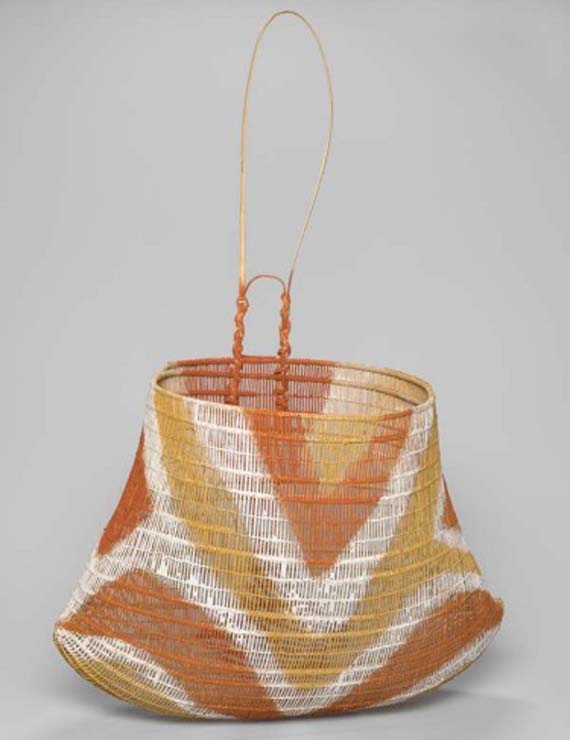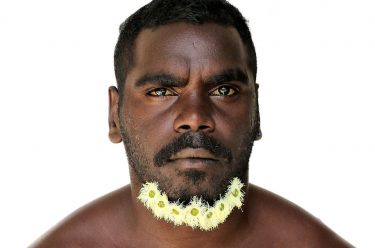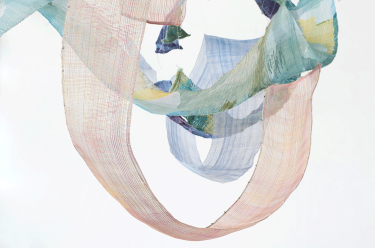
One of my favourite things – Jawun
The United Nations’ (UN) International Day of the World’s Indigenous People is observed on 9 August each year. Today, I thought I would profile one of my favourite works from our current exhibition ‘Across Country: Five Years of Indigenous Australian Art from the Collection’.
The bicornual (two-horned) basket or Jawun, made by southern Rainforest peoples from north Queensland, is an example of the unique and iconic forms that were fostered in this small, densely forested region. The baskets are made of split cane, from the lawyer vine (Calamus australis), so named because of its numerous spines and ‘prickly’ habit (once lawyer cane has you in its grip it’s hard to escape). Making these refined baskets must be a labour of love and is a huge commitment to continuing culture, as the first steps are tangling with the vicious vine to produce the canes for weaving.
Today the eminent maker of these baskets is Abe Muriata, a strong and proud Rainforest Bama of the Girramay people. It may seem slightly odd to some that a man is the leading maker of traditional baskets, but in pre and early contact times, in many places men were the primary basket makers, while in others the skill and duties of basket making were shared equally between men and women. Sometime after contact with European social norms, weaving and basketry became ‘women’s work’. Today, Abe is following in the footsteps of other men from this region, such as Davey Buckaroo Lawrence, who have continued to make these traditional forms and continues to assert that this is men’s business, too.
Abe Muriata’s works will also be featured in the upcoming Cairns Indigenous Art Fair, 16-19 August 2012.

